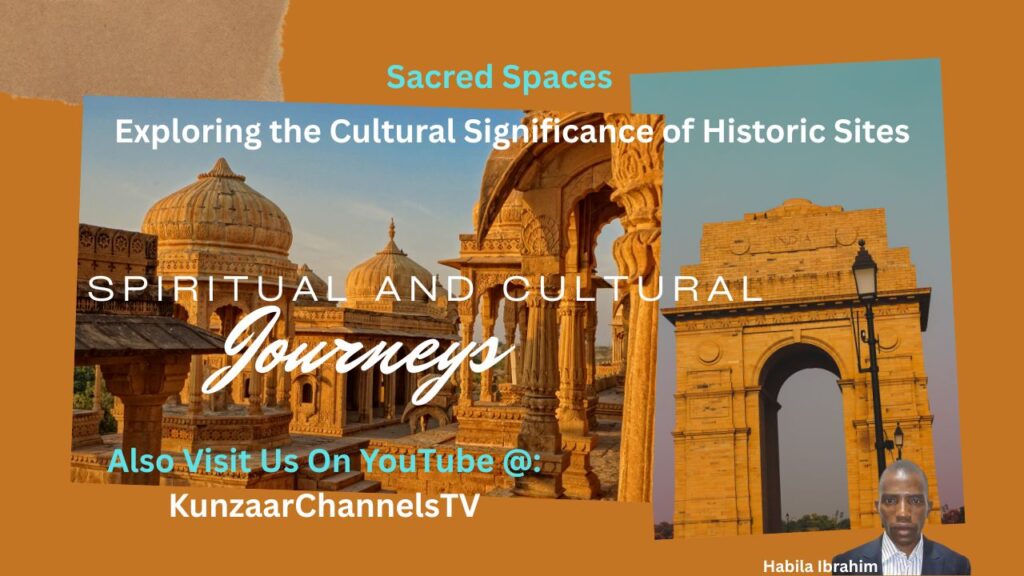Introduction
From the towering pyramids of Giza to the serene temples of Kyoto, sacred spaces have shaped the way we understand ourselves, our ancestors, our culture and the divine. These historic sites are more than stone and structure — they are repositories of memory, faith, and identity.
In this article, we explore the cultural significance of sacred historic sites, where some are located, why they still matter today, and how they continue to inspire awe and spiritual connection across generations which has been in existence for some thousand years ago.
What Are Sacred Spaces?
Sacred spaces are places set apart for spiritual, religious, or cultural practices. They can range from grand cathedrals and mosques to ancient burial grounds, natural sites, and family altars. What unites them is the belief that these spaces connect the physical world to the spiritual realm.
Also Read: Ashanti Tribe of Ghana History and Kingdom
Examples of these sacred sites include:
- The Western Wall in Jerusalem (Judaism)
- The Kaaba in Mecca (Islam)
- The Ganges River in India (Hinduism)
- The Machu Picchu ruins in Peru (Incan heritage)
- Uluru in Australia (Aboriginal Dreamtime beliefs)
These sacred sites attract millions of visitors ranging from those performing religious rites (pilgrimage) to tourism who want to know more about the sacred sites.
The Cultural Role of Sacred Sites
Preservation of History and Identity
Sacred sites carry the stories of civilizations, rituals, and revolutions. They act as cultural anchors for communities — preserving languages, symbols, and traditions long after empires have fallen.
Centers of Spiritual Practice
They remain places of prayer, pilgrimage, and ritual. From lighting candles to walking labyrinths, these acts reinforce spiritual belief and communal connection to the divine. We see yearly where many Christian and Muslim visit Jerusalem and Saudi Arabia respectively for pilgrimage.
Intergenerational Education
Historic religious sites are often central to teaching youth about their heritage, beliefs, and ancestors. Oral stories passed on at sacred places form a vital part of cultural transmission. Schools take a voyage to sacred places to educate their students on the sacred places and their significance. They want the students not to be on the hears alone but to also be on the know and see the places themselves.
Symbols of Resistance and Resilience
In colonized or war-torn societies, sacred sites can become beacons of resistance, preserving indigenous identity in the face of cultural erasure.
Sacred Spaces Across Cultures
Culture -Sacred Site -Significance
Ancient Egypt -Pyramids of Giza -Tombs of pharaohs; cosmic alignment
Christianity -Church of the Holy Sepulchre -Site of Jesus’s crucifixion and resurrection
Buddhism -Bodh Gaya, India -Where the Buddha attained enlightenment
Yoruba (Nigeria) -Osun-Osogbo Sacred Grove -Worship of goddess Osun; spiritual rituals
Native American -Bear Butte, USA -Site for vision quests and prayer offerings
Each of these spaces reflects unique worldviews and cosmologies, revealing the depth of human spirituality and creativity.
Architecture as Sacred Expression
Sacred architecture isn’t just functional — it’s symbolic. Builders design these spaces to inspire awe, reflect religious values, and align with natural or celestial elements.
Examples of such includes:
- Gothic cathedrals with high spires pointing heavenward
- Zen temples with minimalistic design emphasizing clarity
- Hindu temples filled with carvings of gods and nature
- Islamic mosques with intricate geometric and calligraphic designs
- These spaces don’t just house prayer — they are prayers in stone.
The Role of Pilgrimage and Cultural Tourism
Pilgrimage to sacred sites remains vital for spiritual renewal and cultural identity. At the same time, cultural tourism brings new challenges and opportunities:
Positive: Promotes awareness, economic growth, and heritage preservation
Negative: Risk of commercialization, overcrowding, and spiritual dilution
Balancing sacred value with public access requires respectful tourism and community-led conservation.
Why Sacred Spaces Must Be Preserved
In the modern world, many sacred sites face threats:
- Urban development
- Climate change
- Looting and vandalism
- Religious intolerance
Preserving these spaces means preserving the soul of human civilization. It is an act of honoring both ancestral memory and future identity.
You Can Also Read: How to Calculate Discounts and Sales Percentages Fast
Final Thoughts
Sacred spaces are not just relics of the past — they are living witnesses of human faith, artistry, and resilience. As cultural signposts and spiritual beacons, they remind us of our shared humanity and diverse beliefs.
Whether you’re walking the halls of a medieval monastery or standing in awe before a mountain shrine, remember: you’re not just a tourist — you’re a participant in history.
Key Takeaways For All These
- Sacred spaces are vital to cultural identity and spiritual practice.
- They preserve history, teach traditions, and unite communities.
- Threats to these sites are threats to cultural memory.
- Respectful tourism and local stewardship are key to preservation.
Action
How do you stay connected to your culture sacred site? You can share your story using #MyCulturalCode and also comment below so as to keep our culture heritage alive! Let built ties through cultures. Also Visit our YouTube Channel: KunzaarChannelsTV through @kunzaarchannelstv to watch the best of cultural heritage.

